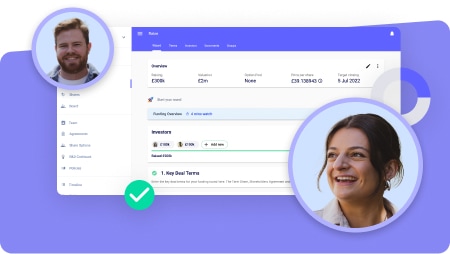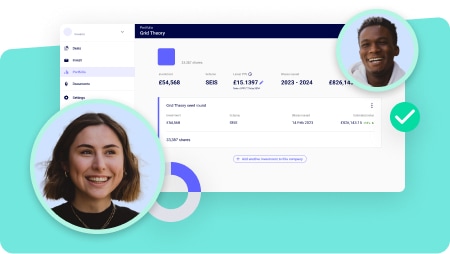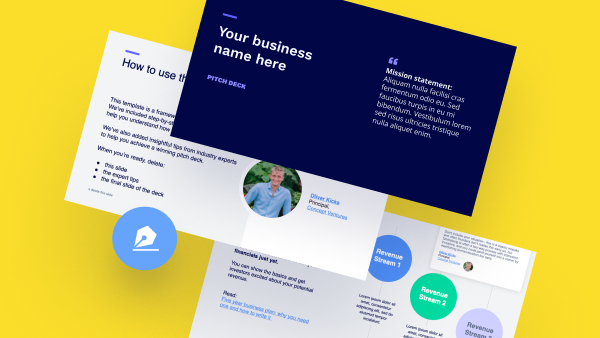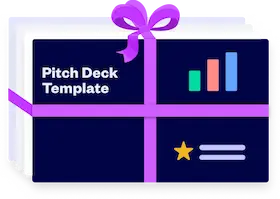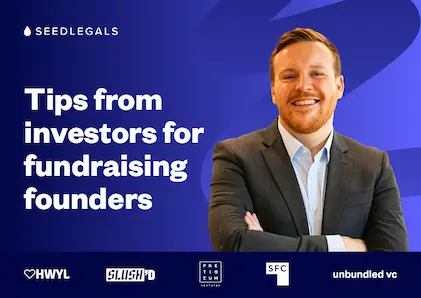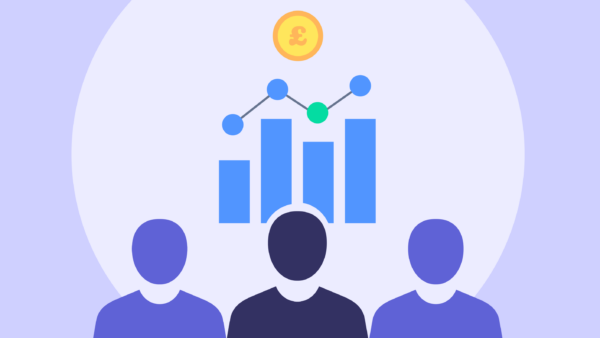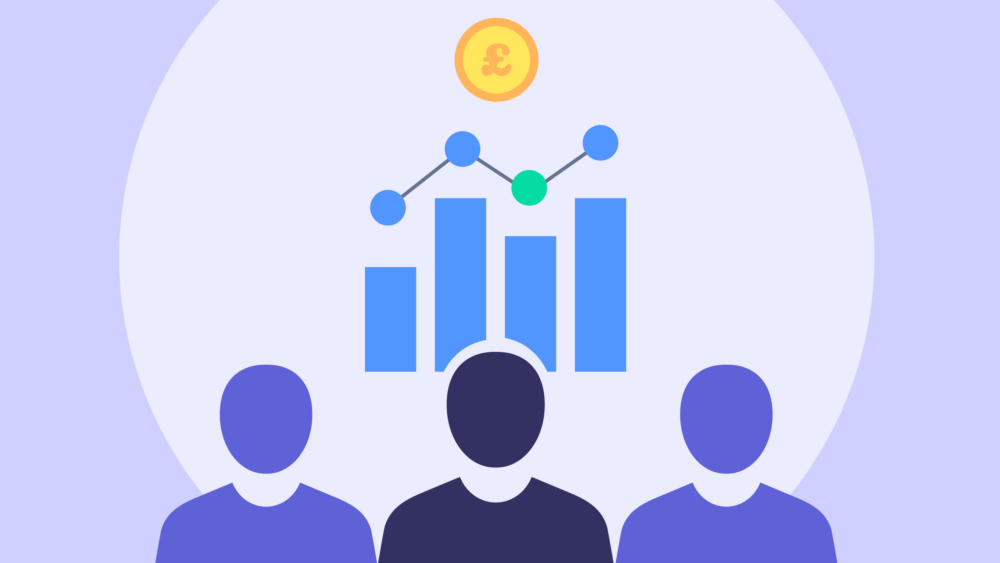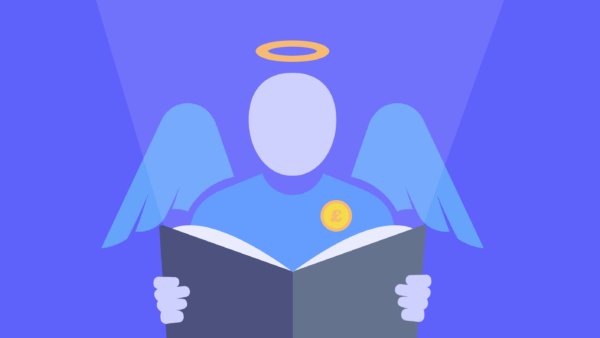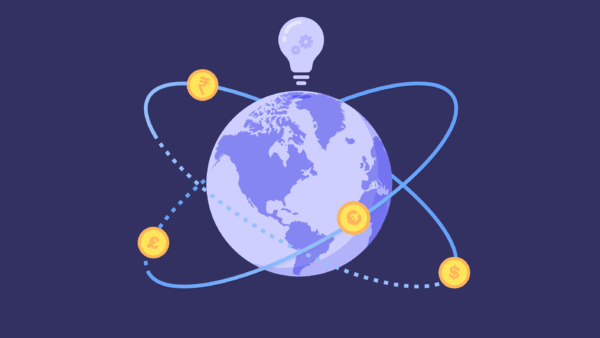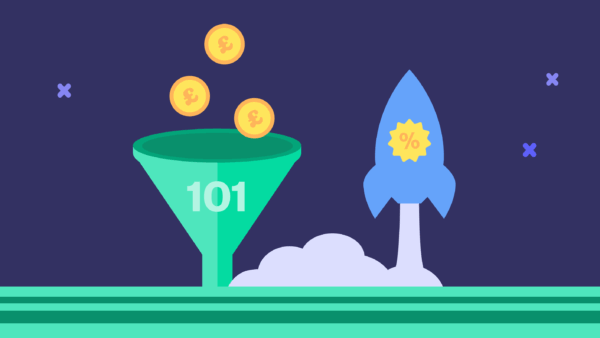Webinar Transcript
Anthony Rose: Hello, everyone while we wait for more people to join. Firstly, please don’t feel shy post any questions you’ve got in the chat, and we’ll get to them a bit later.
Anthony Rose: and number 2, if anyone’s got any things that they would love to learn about. Now please post them now, and we’ll make sure to address those. This is your opportunity before everyone else gets in with questions. As an early arrivalva you can ask, ask away.
Anthony Rose: So
Anthony Rose: let me turn on Gallery view here, so I can see everyone, and if any one wants to say hello for just a minute, you’re welcome to do that.
Anthony Rose: Alright. Then we’ll wait
Anthony Rose: a few minute, and small
Ali Arslan: and
Anthony Rose: and good question from Jeff. So everyone, please do. Don’t feel shy post questions in the chat. We’re going to talk for a bit first ourselves, and then we’re going to get to your questions. So Jeff asked. Get opinion on compensate early. So teams when cash flow is light. It’s a great question. I hope Matthew’s got the answer to it. But we’ll we’ll get to that
Anthony Rose: all right. So let’s ask
Anthony Rose: Kickoff all right. So Hello! I’m Anthony. I’m founder and CEO at seed legals. It’s the place to go for your funding round. One of the things I love at seed legal is not doing webinars that promote seed legal’s, but figuring out the things that our customers want, finding experts that solve those problems quite separate to your fundraising problems and then bringing those experts to help on the things that help you grow your business faster. So I know personally.
Anthony Rose: Hi, Mcgee, I’m a product guy. I’m an ex CTO. What do I know about selling? But when we started, see legal’s, I learned very quickly that the founders have to be the first salespeople, and I personally sat on a beanbag outside our office at a workspace building. Outside the office, I didn’t disturb the team doing, you know, sales calls.
Anthony Rose: And for a founder it’s essential that you, you know, actually go off and talk to customers and sell your products directly, because that is the way you learn what people really want. As to what you had in mind. But
Anthony Rose: I think the biggest problem that most founders have is they think that success is building things. And in fact, success is having people want what you’ve built. And if your focus is on building things which, of course, at the start, you have to do because you have nothing to sell.
Anthony Rose: The problem is at some point you have to switch gears. And to me, when I see startups.
Anthony Rose: and even in my own businesses, the failure to switch gears, I think early enough is one of the things that holds up a company’s progress. So you, as a founder, you’re often a tech person, or you’re an MBA. Or you’re a doctor, and you’ve got a problem to solve. That’s why you’re a founder, and you get together with some colleagues and you focus on building this, and you’re always embarrassed about launching it, because not ready yet, we need more features. But actually, there’s nothing like
Anthony Rose: of getting out there and selling it. And to me it’s the switching of gears from we’re building something to. We’ve got enough built that we need to get out. And now get feedback from people and get sales and revenue, because, of course, the more that you’re selling, and the earlier that you’re selling, the less you dependent on investors to give you money for your business, and the faster you can grow the business, and the more interesting and attractive it
Anthony Rose: to investors. So with this as the framing. It’s all about right at the beginning
Anthony Rose: switching gears yourself from I’m I’m building something to personally have the founder I am selling, and then transitioning to. Actually, I now need to get back to running a business and growing the team and getting fundraising. So I need to put that sales team together.
Anthony Rose: And where do you find those first salespeople? How do you compensate them? What is success? How do you get them to sell something when you’re still building it, and it’s not finished. Should you hire ahead of sales and marketing? Or are they just going to focus on spending all of your money building a team instead of getting out and doing calls themselves. How much should you spend on? You know customer acquisition costs? And how do you get lifetime value, and and so on. So, without further ado.
Anthony Rose: let me introduce you to Matt from cosmic partners we connected a while back. I love how his company is helping as an advisory
Anthony Rose: founders build sales team, build their sales function. And I thought, when we’re talking we should do something for everyone, so that you get that brain dump, and over the next 45 min, hopefully, you’ll have a great deal more info to build your sales team and grow your business. So, Matt.
Anthony Rose: take it away.
Matthew Codd: Thanks, Anthony, thanks for the introduction. You’d have to excuse me, guys. I’ve got a a slightly a bit the back end of man, please, if you see me at any point. That that that’s the disclaimer that’d be a really excited to to walk you through. And today, some of the, some of some, some of the areas of focus. If there is anything at the end, please please put the answer is, gonna keep an eye on the chat. Please, please put any specific questions in the chat, and and the idea of this is to try and make it
Matthew Codd: as interactive as possible. I’m conscious about not just death by death by slides here, basically. But I will use a couple of as as as some prompts. So please please shout or raise your hand or come off camera. If there’s anything specific that that jumps out at you.
Matthew Codd: Cool, just double checking that the screenshot is working. And today, yeah, we’re good. A little bit about me, I suppose, just to make sure you’re in in safe hands. I’ve spent my career technology company. So the last 15 plus years have been in sales the last 10 years. More than 10 years have been a revenue leader. So Vp sales, cr, and then kind of more recently did some
fractional work for Vcs and their portfolio organizations. So I’ve seen lots of different companies and seen what works well, and maybe what what doesn’t work? So what’s the idea here is to share should share some of those learnings.
Matthew Codd: The main topic is already covers. Some of these offices really really quick reminder. We’ll look at some of the challenges I’ve seen or how do you see? With with businesses? How do we become really good? Selling as a founder? How do we convert more customers? How we build that repeatable revenue model. And ultimately, how do we then transition found ourselves and build our first sales team?
Matthew Codd: So the first place to stop for me is I speak to lots of founders all the time, and here lots of different things. And they they’re almost always looking to they’re all different things, and a lot of time, I think nowadays is great because there’s loads of content available online, you know, even joining sessions like this. But sometimes the playbook for
Matthew Codd: different companies is is different. So I always think it’s important to think about the type of business that you want to build. It’s easy to read a blog online or want use less or something, and think, oh, that was the playbook for that company which was, you know, got to multi billions. But maybe that’s not the kind of business that you want to build. And that’s okay. So always starting with in mind is what is the type of company I want to build. Do I want to be this solo entrepreneur? Don’t have a really small company that’s really
possible, or actually, am I, gearing up to build a reschedule machine that wants to. That wants to exit because fundamentally, how you sell and how you go to market is very, very different for depending on the stage or or the type of company you’re looking to build
Matthew Codd: and I suppose, over the last 10 years in like revenue leadership roles. This is kind of, I think the biggest challenge that I’ve seen is this kind of loop that happens all of the time. You know, we build a great product. We’ve got this really cool product that we we know that people are gonna love. It’s the best product, you know, no one’s not anything like this. We’re gonna say, this market found assigned some early customers
Matthew Codd: and sees that as kind of product market fit. Maybe these are, you know, close connections, or we’ve been referred to a few a few people. We’ve got some early adopters and and great, we’re onto something. Let let’s hire some people and make this and make this repeatable that maybe we’ve done some sort of around now, or proceed, or or something similar or seed around. And we’re now, gonna you know, look to hire first sales personal sales people.
Matthew Codd: and then it doesn’t. It doesn’t work. And and then we kind of do that. Do do that loop again, and and what happens? There is oh, it was the wrong salesperson, you know. They weren’t good fit and lots of other kind of reasons, but there’s lots that we can do. And after well, kind of at the second stage of that, which I’ll kind of go into more detail, which basically sets everybody up for after success.
Matthew Codd: But again, before we do that, I think it’s always useful to have a bit of a sales a reflection, basically almost look in the mirror type exercise. So look up. What are all the things that we thought
Matthew Codd: available to us. Before we actually start doing some selling. And before we actually start, you know, even thinking about hiring W. What are the different categories that we can can can look at. And the first place is about for me is definitely around current performance. You know what is our current revenue. How many customers do we have? What, what do we think our contract value could be? What does it look like today? Touched upon some of the key metrics like cap and Ltv.
Matthew Codd: even if you’ve got some early customers knowing what they are today, will be really helpful kind of down the line.
Matthew Codd: and then, knowing the sales strategy like what is actually the strategy? Are we? Are we thinking about a marketing led approach? Is it more of an outbound approach. So we are we driving more inbound, you know, who? Who’s the Icp who are the personas?
Matthew Codd: You know. And think about that. Really, early on, you know, down the line, thinking about what could destruction look like? Are we trying to to? If we’re all building this outbound mode of what we trying to build a model of like, we want some Sdrs, or actually, we know that our products really sticky. And maybe it’s more of a product growth offering. I mean, actually, customer success will be really valuable. Once we’ve got customers signed up, we want to kind of convert those and retain them and grow the accounts, and a A and things like that. So, knowing what they
Matthew Codd: future structure looks like is really useful in the super early days, you know, the process which will go into more detail, or on how we kind of even do lead. Gen. How do we even get the customers? You know? What tools do we need?
Matthew Codd: You know, day one you know, especially a lean tech stack at the beginning is really effective, doing more with less
Matthew Codd: and then, I suppose the management piece around like you know, what? What access to information do we have? W. From a reporting perspective kpis and everything and everything else. So the main thing is before we kind of get started. Just looking at a real self reflection, a bit of a kind of mot, let’s say, around where we are today and where we want to be. And what are the things that we have available to us to help us to help us get that because it could be quite scary, just glaring at this big, you know, revenue target or
Matthew Codd: big kind of customer acquisition target. But actually, when we break it down into little segments, it can become a little bit more palatable.
Matthew Codd: So
Matthew Codd: I think in in, in, in, in kind of 20 to 2023, and onwards to be honest. This this really applies is this is something I’ve been quite old fashioned with, I think, in my own kind of selling style. A a as well. Is. I think the best sell processes are fundamentally when you don’t send anything to the prospect. You know that I put some basic things on here. But a lot of times these things that gets missed you know, have conversations with people go and meet them.
Matthew Codd: solve their problems, you know, work towards the it’s the small next steps. That are really valuable. You don’t have to think about how we didn’t get this sign customer. It’s how do we go from a discovery meeting to a proposal meeting or proposal to a contract? Those are the small steps that make a big difference. And even to be fair, kind of, you know, going out to networking
Matthew Codd: events and leveraging your network are really valuable. And I think today, because we’ve got so much technology available to us.
Matthew Codd: so much automation out there that just for guessing the basics is a is a really really big. You know, mistake. In my opinion. I think if you combine the basics of selling the basics of building great relationships and human interactions, and you combine that with great technology. Then you’ve got the you know the dangerous combo. But if you just rely on technology to do that without these bits. I think there’s a a, a.
a bit of a big gap.
Matthew Codd: I’ll stop sharing my screen for just a second great points. Thank you. So the first slide was lots of actions on. It was a bit daunting. But I think one of the challenges is the founder. Is that you.
Anthony Rose: You know you’ve you’ve got your projections for your Vc. Slide deck showing by year 5. I’m gonna be doing 20 million pounds a year in revenue, and and you have absolutely no idea of how to get there. Right? You’ve made up some numbers. Now you’ve got an app, that sort of works, and you put it, live, and 27 people have arrivalved and you go. What do I do next? So really, key thing that I’m looking to see us all learning
Anthony Rose: session is those steps that you could put in place to turn an insurmountable problem into step by step. We’re going to do this, then we’re going to do that. So that was thing number one, and we can look forward to that over the next few minutes. And thing number 2 is the really important point you made about. Let’s have a conversation which is about getting out and talking to people, because I think one of the challenges I see many companies have is that the developers
Anthony Rose: and the founders sit in a bubble and don’t talk to the real world. And they think that people want something, and they’re building something. And actually, people either want something else or just don’t understand the way they’ve positioned it. And the number one problem. I see
Anthony Rose: his people tell me this impassion, we’re building X and solves this problem. And you look at their website, and you would never guess what they do. So to me. It’s all about talking to people. The more networking you do, the more noise you make.
Anthony Rose: the more you get out and see other founders, and the more you talk to customers is super important. The first thing you can do is add one of those chat bubbles to your website. So whether it be Intercom, or Hubspot, or one of the many others, and there you turn a drive by into a conversation, because everything you do should be about interacting with your customer. So you know what they want.
Anthony Rose: rather than making assumptions about what they want, and that is then going to lead to you, being able to come up with something that you can sell. And now, with that back to you
Matthew Codd: yes
Matthew Codd: 100 which these quite nicely, actually into. What I was going to talk about next, which is
Matthew Codd: a a little bit of a bold statement, I guess. But ultimately prospects don’t care about your product. And this is a really hard thing for you know, founders right? You’ve spent years, blood, sweat, and tears building this thing that that you’d already passionate about. But the reality is, prospects literally don’t care about the feature or function that you’ve built, that they they care about how you can help them. And the reason I’ve kind of put this on its slide by itself.
Matthew Codd: To tee up a lot of the next conversation. Just having this in mind. That we’re what we’re effectively doing is we’re selling change. And we’re not selling our product. I mean, even recently, a couple of weeks ago, I went to asap
Matthew Codd: event. And I always like to go up to different stance to see. You know what companies are doing. And every single standard. I went to this stuff basically started pitching me straight away out product does this out product does that? And you know, look at the TV behind us is got this feature out of that function, a A, and then you basically just walk away because it’s just another piece of technology. But just by asking a few questions to understand. You know what the things that someone’s working on, what the challenges they’ve got within their business.
Suddenly it becomes really impactful when you talk about how you can help them. It could be one small thing, and that one small thing is what will get them to become a customer. So just like to keep in mind, I suppose.
Matthew Codd: So who would be selling to you know, is is pretty volatile, and and for me, like a really great way to understand your prospects or your target market. Very, very well. Is is speaking to wipe them friendly, so that if there’s a a better terminology, but you know, friendly people. The great thing about setting up friendly conversations is
Matthew Codd: you get to learn lots about the potential buying process. You know, feedback. The reality is selfishly. You end up with a Mini discovery. Call. So as long as you set up a friendly conversation and don’t sell anything, you build a relationship. Anyway, you do have any discovery call. But you learn loads about how to sell your product. You know. If, for example, we’re selling to Hr directors set up calls with 15 hr. Directors and say, Hey, we building this Hr.
Matthew Codd: Tech, you know I’d love to learn from Hr leaders like yourself. And can we get 15 min? So I can share what I’m building and capture. Some feedback. People love sharing feedback people love sharing learnings.
Matthew Codd: And you can. Ultimately, what you’re looking to do here is to kind of bottle that learnings up and and and package it so definitely go really, really deep on these, you know, around product. Fe, you know the problems you’re solving. You know what a potential buying process would look like who would need to be involved in that process, and a a A and things like that so definitely a key one for me is is setting up those friendly conversations. Ultimately, what you’re looking to do here is looking for those common goals, common challenges.
Matthew Codd: are we seeing that those other Hr directors are struggling with the same things? Is there a recurring thing that’s happening so that we can make sure our product solves those things that we found out.
Matthew Codd: And and fundamentally, our, our our goal here is to ultimately build a small territory plan you know, a of often and again using the using the kind of the wide tech and tools we’ve got available to us. Linkedin is ultimately the most up to date database in the world. You know. You’ve got millions and billions of users on on Linkedin. And actually, sometimes the market can be too big. So, starting with a small reach.
Matthew Codd: defined a target list of people or territory or plan, or, you know, whatever that might look like is more effective doing doing a smaller segment. But really we well and penetrating that segment of the market is way more effective than kind of the sprint price. Don’t be afraid to really know your settings. Start a little bit smaller than we think you you’re gonna go, but really penetrate those accounts really. Well.
Matthew Codd: I don’t know if you any of anybody before, but like developing persona’s and coming up with fun names with them. So we know. How do we sell to Hr. Director versus the Hr. Manager versus, you know, Hr. Executive versus the CH. You know, getting that messaging different for all those people is is really important. Because going back to the problems we spoke about, all of those people got different problems. Maybe the Hr manager would love to be a Hr director at some point. And this problem
Matthew Codd: they’ve got is gonna help them get that promotion. Or maybe the CH. Is gonna you know, equity in the business and by helping, you know, solve those problems there because he’s gonna grow and it’s gonna help them get it, whatever whatever the personal motivation might might be. That’s what we’re looking for when we’re looking at, you know ultimately, who we’re selling to and also we move on is around like getting access to really good quality data. So again, starting small
Matthew Codd: but don’t be afraid to. You know. Go small, but get get access to that really good base which I can give you some tips on a little bit later.
Matthew Codd: I’ll do almost like before I II pull some a little bit, but the next piece for me is as a founder. It’s the things once that is is your role to become that sales leader and touch. The point at the beginning is, you know, do we hire this first to the sales? Ultimately hiring somebody isn’t gonna solve the challenges that we’ve got isn’t gonna solve the growth trajectory. The more customers
Matthew Codd: we as the founder, needs to become excellent at selling, and we need to act like a head of sales effectively before we’ve got somebody. Then we know when we already down the line we know the type of profile that we need? You know. Maybe. Do we even need a head of sales? Or is it more kind of option? We when we, the founders, can carry on doing sales, we’d love more students. Maybe it’s an Sdr.
Matthew Codd: so as as this header sales you know things that heads of sales are normally very, very good at is asking lots of questions. You know, doing doing discovery very, very well, being naturally very, very curious
Matthew Codd: starting with those key targets that we spoke about in slide before. But ultimately, the first thing to think about that you’re actually selling. If you’re really just selling a meeting set. There’s there’s no point trying to sell your product on the first call or the first conversation, or the first interaction. You know we spoke about going to those events and meeting people face to face. There’s nothing more annoying that that you know. The pitch slap right? Hello to somebody instantly you get. You know you’re getting pitched to
Matthew Codd: build those relationships, sell the meeting initially, sell the discovery meeting once the discovery is gone. Well, you know we might sell the demo if the Demos gone. Well, maybe we might sell the proposal stage, or whatever your sales process looks like. So having that mindset will really help kind of work towards those smaller more palatable lists versus this, you know the you know, staring at, you know, a big challenge. And and definitely being really accountable principle with your
Matthew Codd: time and kpis and targets. It can be really easy to, you know, miss. A month, miss a call, so
Matthew Codd: there needs to be some real accountability. If if we had a head of sales in the business it wouldn’t be good enough to just let it slide that we might miss the call to the target. So we need to think like that as a as a founder as well. Right. If we set those clear milestones, those objectives. Maybe we’ve got the investment we’ve got, you know, to get 20 million, you know, pounds, or whatever we’re trying to to get to every every single month, every single call. So every counts.
Is there a reason why we missed? Did we overshoot it? Could we have done more? Did we don’t have enough opportunities? Did we have too many opportunities? And that will help with from a accountability perspective.
Matthew Codd: But yeah, we’ll stop my screen share just for a second any questions that came in or anything. Anthony.
Anthony Rose: all right. Well, thank you. So there are 3 things I’m going to jump in there. Number one is. The persona who are you selling to? And it sounds kind of obvious, right? But actually, it’s quite difficult, and particularly if you’re selling to large companies and one of the challenges in a large organisation. It’s identifying who’s the decision maker. And I think a great example to me is slack, so slack one at at the outset, because they recognise that
Anthony Rose: in a large company you had to persuade the IT. Department to go and set up these complicated chat server things, and then you have to persuade the marketing sales someone’s budget to take something off it. So you have to persuade. You know the bean counters to pay for it. So slack went. No infrastructure is needed, and it’s free. So everyone in in a company began to be able to take advantage themselves.
Anthony Rose: So if you’re selling to a large company, you might be targeting the sales team because they going to be the decision makers. So it might be you’re going to focus on cost savings. It’s going to be the accounting department, or you might. So you want to find your champion who’s going to
Anthony Rose: be pushing it within the company, and then you’re going to find the naysayers, and you’re going to have sales messages for them, and you may start by focusing on one.
Anthony Rose: You know, if you’re targeting startups or Smes, are you targeting the founders who gonna make decisions fast. They want Saas systems. They want to work on the weekend and do stuff quickly. Or you’re gonna focus on people who gonna go. You know, Gdpr, reliability, accountability whatever. So your tone of voice, all of your messaging is going to be set up for the key persona, and if you get that mismatch.
Anthony Rose: you going to be forever a beating with the wrong message on the wrong person.
Anthony Rose: and not finding your way into that company. So, of course, the challenge with making up a persona. Is you just going to go?
Anthony Rose: Bob is a postman, and Bob gets up. But it may be completely wrong. So the more you talk to real founders or your real customers, the more you’re going to evolve your persona. But then that should be almost like a poster in in the office. So you have that in mind. So everything, from tone of voice onwards is designed for that persona
Anthony Rose: thing. Number 2
Anthony Rose: is, you know, you touched briefly on when to hire the first salesperson, and we we spoke about that earlier. But I think if you’re an early stage found it’s going to be one of your pressing, you know, decisions to make.
Anthony Rose: If you hire your first salesperson too early before you’ve got a product ready to go, they’re going to be quite frustrated. And it’s costing you money because they’ve got nothing to sell. And they, you know, we all know development takes longer than you expected to take, so your salesperson will be twiddling their thumbs going. You told me it was going to be ready in August. You told me September. Oh, no, we’re almost ready.
Anthony Rose: Leave it too late. And you now have spent lots of money. You’ve got a team of engineers building stuff, and no one’s selling it.
Anthony Rose: So you kind of bridge that gap by as the founder, you become the initial salesperson, learning what people really want.
Anthony Rose: and if it’s not ready, you you spend more of more of your time on products, and if it is ready, you spend more of your time. But hiring the sales team and and selling yourself.
Anthony Rose: Third point is, sales targets. So this is a really interesting problem. And of course.
Anthony Rose: it’s one problem for later stage businesses, because in the beginning stages, just selling. One thing is totally awesome and then selling another, and you don’t have enough data to understand what your target should be. Should you sell 100,000 pounds a month, 2,001 sale a month, nobody knows. But once you’ve got
Anthony Rose: some information on yeah, how you acquire customers, the cost of a customer, the cost of servicing a customer, the friction, and the time it takes for them to make a decision. Now you can start thinking about those goals. And and when you hire sales team members, you learn very quickly
Anthony Rose: that great sales team members are bit like those hunter killer submarines. You give them targets, and they go find them. And you know you want to give them sales targets, and you want to, and they will want to be compensated with a commission based on sales, often
Anthony Rose: so finding targets that are suitably stretched but not impossible to reach, and not so modest that nobody tries is going to be important. So one of the things, the other things as the founder you learn if you’re not from a sales background is how the sales machine
Anthony Rose: operates. And hopefully, I’m being prescient, and that’s going to lead to the next slides. Take it away, Matthew.
Matthew Codd: at least really well into the discovery piece. And and I think this is where I’d say it’s 90%. But I actually think it’s more than that. III see lots of pipelines, lots of you know, opportunities. And and this is where even my own sales say that this is where most well, most it was definitely one and lost and being really good as a founder at nailing this part
Matthew Codd: basically sets up the rest of the success. You know, I would say,
Matthew Codd: you know, knowing. So having that kind of clear agenda is really important, you know, every time we meet with somebody, you know, having a clear agenda again, going back to the basics that I was saying that they get missed.
Matthew Codd: Show that we we are driving the process, you know, when we buy tools or products or services. We was always feel more reassured when someone’s got a clearly laid out process. And without that clear process, or if the person isn’t driving it. It kind of makes us nervous and think, oh, no! Is this company to early stage for us? Are they, too? Are they too? Are they too scrappy. So you know, making sure that we, as the founder in this situation, are driving
Matthew Codd: next step, showing that we know what happens next, is really important and on the on the discovery, like framework, it’s key to have
Matthew Codd: a bank of questions actually written out. Because it’s really easy to forget them when you’re on, when you’re on the call or the meeting. So, coming up with a list of questions that you’re going to ask that will help you qualify? Is this an opportunity, or is it not an opportunity? And these questions are often bucketed into sections, are you? What are the personal motivations, you know for for that individual what’s personally gonna make them do something.
Matthew Codd: You know, as a company, as an organization that we’re selling to, how are we gonna help that company. How is it gonna help that business unit? Because the thing to remember with sales is effectively what we’re doing is we’re throwing a load of work over the fence to a prospect.
Matthew Codd: We’ve potentially knock on their door to say, Hey, I’ve got this great product that I’ve built, you know you should buy it. That’s given them a lot of work to do. You know, if it’s a decision maker, they have to make decision. Is it the right tool. Let me go look at some other products. I wasn’t thinking about this, you know. Let me do some homework. If it’s a champion. Champions got to go to their boss and say, Hey, boss? You know, been talking about this company? I think it’s a good fit, you know. Boss says, can you go to business case.
Matthew Codd: and so the more that we can try and break down the opportunity in the early days and find the personal triggers, the company triggers. That’s the kind of stuff that’s gonna help us. Be really sticky and and we’ll kind of force us to be more collaborative with prospects versus, hey? You know, you should buy it? Actually, we. We recognize that we’ve given them a lot of work. So we’re gonna partner up with them and and help go on that journey.
Matthew Codd: that journey with them. Obviously I’ve talked upon this already, but I can’t emphasize enough around the lots of questions. It’s it’s curiosity, curiosity, curiosity. Even when you think you’ve asked the question. The reality is, ask ask the follow-on question on the back of that one, and the reality is after that, ask another follow-on question off the back of that one, and then you’ll get the root. The root reason there’s a framework.
Matthew Codd: That’s really effective, which is I think comes from Japan, I think, was the founder of Toyota. Where he spoke about basic the 5 wise framework. If you ask why, 5 times you’ll get to the you’ll get to the real reason, right? So if somebody in your team says I’m you know I’m gonna be late to work tomorrow. Sorry about that. Okay, no problem, you know, hopefully, won’t be this micromanage management. But you know, if you ask why
Matthew Codd: you gonna be late for work tomorrow, they might say, oh, I didn’t sleep very well, you know. Why did you not speak very well? Oh, because I’m quite stressed at the moment. Why you stress at the moment. Oh, because I’ve got some credit card there, and that’s what’s keeping me up at night. And that’s why I’m gonna be late to work so suddenly, we get to the real group calls as to what the challenge or problem might be. And then we can help in that situation can help that person potentially get out of that situation. And it’s the same with customers. If we fundamentally know it’s almost like peeing back
Matthew Codd: of an onion. Right? We get to the middle. We’ll know what it is we’re solving. And most most people give up really early. They’re asking one quick question or not even asking enough questions, moving on and then going to a demo stage and realizing it’s not sticky, or you know we get an email back saying, thanks for your presentation. But we’re not progressing at this point, and there isn’t enough substance or ammunition to kind of sell back and and resolve it, and and kind of recover it from that.
Matthew Codd: And I suppose.
Matthew Codd: as technical, especially if we, if we are technical founders, the thing to remember is, we can be a great technical founder. But I think we’re setting to experience buyers, and an experienced buyer will always kind of spot an inexperienced sales process, and and any experience sales process often raises question marks as to
Matthew Codd: is this a right product? Is the product also going to be rubbish as well, basically so leveling up and speaking the same terminology and the same, you know. Ha! Having the same process as an experienced buyer, even if we already inexperienced seller, just leveling up a little bit, will massively elevate your product, your value proposition? A a and everything else as well. But this is quite a big topic, so I’ll I’ll pull in case there’s any questions that come up in the
Matthew Codd: in. In. In the meantime, as I say, from all of the pipeline reviews that I see this is kind of the number. One reason why opportunities are all guessing stuff, or we’re losing opportunities. So please feel free to add anything in the in the, in the chat, or I can. I can cover them. A a at the end. If there’s anything specific.
Anthony Rose: Yeah. So thank you. I think this raised a really interesting point. Cause I mentioned at the start that I often will talk to founders, and they explain with a lot of passion what they’re doing. And then I go to their website. And it doesn’t explain at all.
Anthony Rose: I think one of the key things is, people often explain what they do rather than why anyone wants it. And when you’re selling, you’re going to identify the problem that the customer has, and then how you solve it?
Anthony Rose: And this goes to the 5. Why’s so? It may turn out that, you know. Are you helping the company save money. Are you helping them find customers? Are you helping them sell more efficiently? Whatever it might be? So find the pain point that you’re solving. Find the person in the company that’s gonna be interested in that pain point. And now I think the pain points you solve fall into one of 2 classes. One of them is.
Anthony Rose: it’s it’s an imperative. The company has to solve this. It helps with your annual tax. Well, you have to solve your annual tax. So you need this or or not. The other one is kind of like the insurance problem. Everyone hates their insurance company, but nobody can bother today to fix it, and on seed legal’s I look at that in my business in with those lenses. So when it comes to funding round.
Anthony Rose: you know you can’t pass. Go and get investment unless you’ve got a shareholder agreement or a seed fast or something. So you have to have a document. It’s an imperative. But when it comes to a cap table, you know, we sell cap tables. Other companies sell cap tables. Everyone knows that the excel spreadsheets are rubbish for a cap table, who wakes up in the morning and goes to day. I’m going to sort my cap table. Nobody cause it’s not an imperative.
Anthony Rose: so figure out. You know, if you can transition your business into an imperative problem, it’s much easier to close deals than ones where you have to persuade companies. Yeah, we’ve got a problem. But you know what. I’ll leave it till next year, because I’m busy right now.
Anthony Rose: The next thing
Anthony Rose: is really tapping into that problem space. Because again, I think most of the times when I look at websites, it says, you know, we use blockchain to do X. But you’re not explaining why, somebody thinks that it’s, you know, if I get
Anthony Rose: this thing that I sign up to now.
Anthony Rose: then I will be able to do X more efficiently in my business, and if you can just focus on that, I think that’s the path. Alright. So
Anthony Rose: next thing over to you, Matt.
Matthew Codd: just one quick one. So there is a a question that’s related to discovery. So I’ll take that one whilst where whilst we were talking about discovery and and do the others at at. Towards the end there was a question around, How how do you do discovery? Without losing control of the conversation? It! To be honest, it goes back to the first point I mentioned at the beginning on that slide, which is
Matthew Codd: you? In your case. I don’t know is, you know you’re driving the meeting. You’re you’re laying out that that agenda. So what that might look like. The best way to retain control of the conversation is to tell people ultimately what’s gonna happen in that meeting, ie. Thank you for taking the time for this session today. Here’s what we’re gonna do. We’re gonna do find out more about seed leaveables. We’re gonna find out this. We’re gonna do this.
Matthew Codd: If we can see a Nic at the great next step. This is what the next step. So basically constantly working towards that, that agenda. And I’d say that my personal, like Number one sales tip around that Eleanor’s around having having that agenda literally written down where you’re going to be taking the notes to the meeting, having that written down, and still 15 plus years in every time I have a prospect meeting. I’ve always had the agenda I’m looking after. Even if I’m not sharing slides, I’ll always have the agenda.
Matthew Codd: so that II can force myself to look at it, and sometimes you might need to do time, check and think. I’ve only got 30 min. I’m still on the first point here. So mental note, speed up here, Matthew. So the main thing is, if you if you drive the meeting, if you have a clearly laid out agenda. You can push back to the prospect and say, great question. Prospect to be honest, that’s gonna come up in the next in the next meeting the demo. But for now this is what we did. We we kind of need to do this bit first, to make sure that we, you know we can get to that
Anthony Rose: to that part so great points, and I’ll I’ll hop in quickly, which is, remember, not all calls have to be sales calls. You can also have discovery calls. And it turns out in my experience, most people actually delighted to help, and I incredibly helpful. I mean people write to me. I’m not encouraging. It’s because they’re already 70 h of the day. But people go. Can you have a look at this? So I’ve got some questions of my product, or you know, what are your thoughts on the website? And if it looks like
Anthony Rose: a targeted incoming, you know, if it says, dear sir, slash, madam, I would love your help on you. You’ve already deleted the email. But if it’s like, Hey, Anthony, I saw one of your webinars on something, and you wrote about this, and you spoke about that. And I was wondering what you thought in this message. Somebody’s done their homework, and you get no help.
Anthony Rose: So I think you can happily tap into people that you know, or even companies that you want to target, find someone in the company and going, you know, if you ask for a half an hour call. That’s quite a big ask, but you might go. You know I’ve got. I’m about to launch a product and working on it. If you’ve just got 1 min, can you just hit reply and say, what are the top? 3 things that that you’re looking to solve. Or here are 3 things which one of these is your big pain point.
Anthony Rose: So you could actually reach out to many of your customers. And, by the way, the team at C legal’s do that frequently, which is.
Anthony Rose: we think of launching a new product or changing the work flow, we’ll drop a note to our customers. Well, pick 10 people, write to them, 3 will respond, and either just tell us the answer. We’ll hop on a call with our product team, and people love often to help other companies that are helping them as well.
Anthony Rose: So don’t feel shy to reach out to people and ask for some help, don’t you know? Go! Hope you’re keeping well. Do you have a half an hour to get on a call with me do more subtly, and you may get the help that you need that, then turns it into sale later, or simply helps you create the right product
Anthony Rose: back to you.
Matthew Codd: Thanks, Antony.
Matthew Codd: ultimately, sales is easy. Maybe maybe not being a bit a bit a bit biased there. But sales is really easy when you you follow some of these steps, and these are kind of some 5 key steps that I’ve put together over over the years, and when we strip it right back. You know what that effectively means is
Matthew Codd: that messaging, that really defined messaging that we spoke about before? You’re really making sure, as Anthony says, we’re solving the problems for the specific people that we’re selling to and creating a prospecting list around that. So we’ve got 50 50 companies that we’re gonna go after, you know. Maybe there’s 3 decision makers within those businesses or something. We’ve got 150 people to go after initially, how can we make sure that the 3 different people within each business webinar
Matthew Codd: targets in a different way? We’ve got specific messaging that’s going to resonate with those 3 personas within the accounts. And so that’s definitely the first one and then definitely a multi channel. Multi touch point
Matthew Codd: Bd functions. So even if it’s found a lead sales at the moment creating a Bd function where you can basically touch people multiple times with with effectively a sequence or a cadence. And these sequences or cadences, you can automate them. But the reality is okay. That’s what we spoke about before, especially in 2023, where things like emails. Or you know, you get the Dsa. Madam, you know thing coming up type of thing.
Matthew Codd: you know, we can always spot for that stuff. So personally, I would create a multi channel touch point Bd function that either is like super personalized for definitely for senior stakeholders, and maybe that more junior champion level. Maybe we can automate some of the cadence and not all of it. And in case it’s not clear what a cadence or sequences ultimately, this is a series of events that is gonna take place.
Matthew Codd: And on average, the new staff for B 2 B anyway, in the B 2 world. Anyways, it takes between 11 and 16 touch points to basically get that 30 min time, or whatever the meeting in the dory, or sometimes, even, you know, a response
Matthew Codd: so suddenly. You have to touch people, you know, in double digit times to get that response. And the reality is most people giving up after a couple of chases sent 3 links in messages, and to me to respond back to me, cool, move on onto the next one
Matthew Codd: but when it becomes really effective is we when we have that sequence set up. So maybe if we’re talking hopefully, this doesn’t happen. And everybody on this coast start talking this in this world as it might, it might hate me. But if if we were talking Anthony, for example, maybe the first, the first time we’re gonna touch him is maybe we send him that Linkedin connections. He knows our name and our company, for example. Maybe on the third day, or something like that we send him a really handcrafted
Matthew Codd: email, hey, Anthony? So we did a webinar with Matthew. The discovery really resonated with me whatever whatever you know, personalized, you know, even if Anthony doesn’t respond to that email, he still recognized his head that it’s a personalized email. He saw it didn’t initiate the value. That’s okay, you know. Maybe a few days after we send him a Linkedin connection, a Linkedin message. Anthony sent you an email. Whatever you know, this is what this is, you know, again, not selling anything, you know. Give him some value.
Matthew Codd: maybe doesn’t respond to that. Maybe we’ve voice phone number. You know, there’s lots of data tools out there. We can capture people’s. You know, phone numbers. Maybe we can send a quick video. We can embed a video in a linkedin in a in an email, we can send a video on Linkedin through the native mobile app. We can. We can send voicemails and things like that. So it’s just thinking about all of the tools that we’ve got available to us. To really stand out.
Matthew Codd: And sometimes, if if and it’s a little bit harder with
Matthew Codd: selling to Saas companies to be fair sometimes cause not all saas a lot. Sas companies don’t have physical presences or offices, or especially early stage ones. But something’s massively under use, in my opinion, is is direct mail.
Matthew Codd: You know. How effective could it be, you know, if you were targeting. For example, you could probably do something really cool if you’re selling something, you know. Maybe you send what everyone’s selling or talking about in in a shareholder agreement style, or something like that, you know. You can make a bit of a play on it, you know. Get sent recorded delivery to Anthony. You know. Maybe somebody opens it for him or whatever, but naturally it’s still landed on his desk, and the other 300 emails or links in messages got ignored.
Matthew Codd: But it’s not. It’s not one. It’s not one or the other thing. It’s a series of things that that must happen if you think about it from a BBC perspective. You know. We will get targets every day for ads, and you know, and everything. We might hear that new apple iphone 15 on the radio. Then we get on the tube and we see the you know titanium. Add this on the, you know, on the add as well, and then we’ll pass the store. It it’s it’s a series of events that then make us buy something, and it’s exactly
Matthew Codd: to the same from A from a B twob perspective. So gracing that really slick multi channel way of reaching out that showing that you’re personalized and not just kind of spray and pray, approach, which is what to go into. A lot of companies do and it just it just doesn’t work. Now, the emails are almost dying unless they’re really handcrafted the conversion rate so horrendous at the moment. You know, the days of getting really strong, you know, used to both to just bucket people.
Matthew Codd: put them into a cadence, you know, and loads of people come back. And so, yeah, hopefully, that’s helpful.
Matthew Codd: We spoke about discovery. I won’t go and spend too much time here, but obviously having that framework as to what what we asking, what the must have, we must get from this meeting to to help us see if we’re solving those problems. And then, really important, one is knowing how to qualify the opportunity. But more importantly, how to disqualify, and as a founder is really hard to say. So a potential prospect. Hey? Prospect!
Matthew Codd: We’re not the right company for you. Sorry about that. We can’t help you, we we we that isn’t what we’re building. The easy thing to say is, yeah, that feature. Yeah, we can build that for you
Matthew Codd: a A, and then you’re basically building a product for a specific small segment of customers or customer and your burning time burning development time. And nobody else wants that thing. It’s just that this prospect wants it. And a lot of times that’s because we haven’t sold the value. And we’re selling feature functions. But the mighty really important thing is knowing how to disqualify and say, this is my framework. If they don’t meet this criteria, I’m gonna park them for now May, and maybe in 6, 12 months time they they might be they might be a a fair
Matthew Codd: and then ultimately the last thing is looking for the trends AV test. See what’s working wasn’t working, are we seeing again? If I use the Hr example again for the purpose of this, if we’re talking. Hr, and we’re seeing that we’re getting a much better response rate for Hr. Directes than Hr managers, for example, or the C-suite is, you know, the response rate is is a little bit lower. But when we target the C-suite initially, we see that the opportunities progress much quicker. The deal velocity is much more
Matthew Codd: quick. So we’re just looking for all those little friends. And ultimately is, the growth is all gonna be in the data set. So we’ve been able to set that data. But I think if you can do these 5 things very, very well. It kind of sets up sets you up very well for kind of that repeatability. That that we spoke about at the beginning, which I’ll do this slide before I do this reports, because it it kind of
Matthew Codd: flows quite nicely. So what we’re looking at now is the repeatability and the transitioning. And that transitioning is, how do we transition from founder. Let’s sales effectively.
Matthew Codd: And and having that
Matthew Codd: that plan in place, let’s say we want to use against these 20 million as a as a as a goal for now. But let’s say we want to get to that 20 million of they are in 2 years. What does that actually look like from a backward sales plan. How many, how many people do we need to speak to to get that 20 million? And how many customers does that even equate to and it can be really effective to do a bit of a whiteboarding session and almost create that funnel to know what you kind of need to be doing at every stage to, to, to work towards that. And I find that’s really effective to help
Matthew Codd: build that repeats ability. Because then we know. Oh, we need to get extra marketing, or we need to spend more time on partnerships. So actually outbound is going to be really effective for us. We? So we need to build we need to build a repeatable outbound plan. And what I mean by that working back from the targets. It has to be really granular.
Matthew Codd: So if we bought that 20 million AR target, and let’s say our A contract values are a million. So we need 20 customers to get our 20 million if we need 20 customers at a million acv each. How many
Matthew Codd: contracts, you know, we’re working back from whatever your sales process looks like if I use a fairly generic one, for now, how many contracts do we need on the table to get 20 customers over that timeframe. Maybe we see a one and 2 drop off rate every time we send 2 contracts we get one back and one slips or something like that. So then we need 40 contracts on the table to to to to meet our initial milestone. If we work back from the contract stage, maybe proposals.
Matthew Codd: how many proposals do we need to send to get those 40 contracts? Maybe we need one in 3. So we need 120 proposals and working all the way back from there. Basically, you know the, the demo stage, the proposal, the discovery stage. And then almost once you’ve done this, the discovery onwards, bit the sales process. It even goes back further than that. So how many accounts do we need? How many people we need, how many touch posts we need and ultimately scary numbers. But the fact is the fact that
know the number helps you build that repeatability and helps you double down to know where we’re spending our time. And maybe it’s okay that we missed this month’s target. Because look at the progress we made with the other areas of our backwards sales funnel, which is gonna pay off in in 2 months time.
Matthew Codd: And we spoke about it before. But then also questions struggle into more detail. We spoke about. The structure, you know, is a Sdr. Is an account. Executive is a custom success type, person. Whatever the hardware looks like to be honest.
Matthew Codd: You can never hire anyone in a commercial role, in my opinion, without having a found a playbook. You need to basically document everything as you’re going, because even as the founding, when you document something, you’ll look back in 3 months time and think, bloody hell! Did we used to say that, or did we used to, did. We used to pitch it like that. Nothing held that scary. So, having a documented helps you kind of keep pivoting it. So when you, whenever you are ready to make that first tire you’ve mapped out.
Matthew Codd: you know, what does? How do we handle objections at XYZ. Company. How do we? You know what is our qualification framework? What is not what is not enough. You know the cool scripts, the email script, the persona script, the you know, the target market. You know what you know, all, all of those things having everything documented. And personally, I use tools like notion that there’s loads of other ones out there. You know, can be really effective. And having that found a playbook
Matthew Codd: basically sets you up for success and to realize the best people will expect that what they, what the best people won’t want or or or basic, where, where, where that feedback loop, where that cycle really happens every time is we get some early customers. I mean, I had a founder message me the other evening, said, can you help me find an account executive. And I said, Absolutely not, he said, you know why not? And so, because you’ve got 3 customers, and you’ve got 3 customers that are all very, very different.
Matthew Codd: There isn’t a recurring thing that’s like, yep, you’re you’re you’re onto something of 3 very different customers. And without that, without that mapped out without that playbook you hire whoever you hire head to sales Sdr. Account executive. You hire them, and then they’ll then they fail, because if we haven’t figured that out that that’s out as a founder. We can’t expect
Matthew Codd: somebody that isn’t founded to figure out, because they won’t. What we want to do is to make it repeatable. Build that playbook. Then when we hire someone, we say, Hey, Sdr, hey, head of sales, whatever this is going to be, this is how we do sales here. This is this is what I’ve seen, what really. Well, obviously, you’re gonna go away and tweak it a little bit and make make it make it, you know, transitional found itself. But this is the book, basically.
Anthony Rose: Alright. So thank you. So 3 things I’m going to hop in here. The first one is. There’s a formula, as you you know. If you’re a super early stage founder and watching this, you are probably going. Oh, my God, there’s like all these things, there’s these buzzwords, so
Anthony Rose: chill breathe. Every founder, myself included has discovered
Anthony Rose: this as they enter the space. and what you discover
Anthony Rose: is that your initial thinking was, I need to like hire some people to sell things, but you quickly learn. There’s a whole formula around this space. There are all these buzz words so the most important one that you may come across, or ones you come across, of course, is custom, acquisition, cart lifetime value. Then you’ve got Sdr sales development Representative. Those are the people who create those outbound sequences.
Anthony Rose: And then you have an account manager, and things are divided into inbound and outbound, so inbound, of course, or where people know you, and they contact you, and if your business is well known enough and you’ve got inbound, that’s awesome at sea. Legal’s. It’s fantastic. Most of our incomings, or most of our customers, are inbound because people know us, and of course we work really hard
Anthony Rose: to have events like this, where people know about us more and know that we provide a solution that that only helps you grow at a certain rate. Beyond that you have to do. Outbound messaging and outbound is, you know, we’re on Linkedin. All those messages you get from people. Email sequences. And it turns out there is entire formula around that, but also turns out I’ve done a webinar with a guy fabulous guy called Tybori
Anthony Rose: from a company called saleslabs dot I/O, and head of saleslabs, and he’s got some excellent webinar actually, and content. That shows you the ideal sequencing to do. And the formula for how to write to people on Linkedin.
Anthony Rose: and one of the questions was, If somebody doesn’t answer, should you keep writing to them 11 times? And the answer is, 11 is way too many. It’s like 8 too many, and you might give up after 3 or few, usually 4. And so you have an icebreaker that goes out. That’s
Anthony Rose: you know, if you’re into the Rugby and might talk about the Rugby personally that would get me to hit Delete instantly, but something relevant. Hey, it’s taxier ending. And have you done X, or whatever it is that might be more relevant, and then something to get a bit of interest and permission to tell the person more and then trying to pass it on to your sales team. So the whole outbound Linkedin, typically prospecting of it may turn out that
Anthony Rose: your audience are
Anthony Rose: Gen. Z. And not on Linkedin, but on Tiktok or elsewhere. So you’re going to find the right medium, and you’re now going to find people to do that and craft that outbound messaging, and that’s your Sdr. Function.
Anthony Rose: So where I’m going with this is key to this session and others is to learn that there is a formula, and then learn how to quickly get to best of breed on each of these functions as you grow. And of course, when you’re 3 people, there’s no such thing or need for an account manager, and everyone’s going to be doing a bit of everything, but as you grow a bit more, those roles become a bit more specialized.
Anthony Rose: So
Anthony Rose: the next thing, which is a really important point is particularly at the early days. But actually, any time in your in your company journey you’re going to find customers that want something that you don’t quite have.
Anthony Rose: And when you start, it’s a really difficult problem. So let’s say, legal’s we started and we’re doing funding rounds that people wanted particular share classes, or they wanted a particular convertible, or they wanted us to be in a different country.
Anthony Rose: And at what point do you realize if you say no, you’re just gonna be saying No to 90% of all incomings. And you don’t have a business. But if you say yes to everything, you can never ship this product that you have in mind. You’re essentially a time and material business, and you’re all over the shop.
Anthony Rose: So saying, no is really really important. And to me. What I liked is, I don’t pretend I’ve got it right, but I like to think.
Anthony Rose: is this a one off special request? In which case I probably should say no to it. Or is this something that actually a good fraction of all customers in the space we want to be in are going to need. And we’ve just learned early on that. We need to to build that.
Anthony Rose: So as part of this process, what you want to do is you’ve mapped out in your head, your product that you think you want. You could spend months and hundreds of thousands of pounds building the complete product, or you could get out there with an Mvp. The minimum valuable proposition, and launch something with only half the features you think that your customers looking for.
Anthony Rose: and that, I think, is really the way to do it. You might be embarrassed that so simple. But that’s actually okay, cause it’s going to turn out that customers want way more than you thought.
Anthony Rose: but different things than you had in mind, and if you build the whole thing, customers are not going to want or ask for half the features that you needed.
Anthony Rose: So you’re much better off launching early with a simple thing.
Anthony Rose: and then either telling Count, you know, customers, you know, honestly sorry we’re just not there yet. We think about it. Let’s take your email and get back to you with for later. Or you might go team. We really need to build these because we’re losing too many customers. So you gonna use that for feedback. But of course you don’t want to disappoint customers by keep promising them things that you can’t deliver.
Anthony Rose: So let me zoom through a couple of quick questions. So
Anthony Rose: I think we’ve covered.
Anthony Rose: Okay. So so let’s dive into what is the character of the first salesperson you’re gonna hire. So I’m gonna speak about that for a minute, and then I’m gonna hand over to you, Matt, which is your first salesperson, is probably gonna be a bit of a jack of all trades, because what you don’t want to hire is a head of sales or marketing cause they’re gonna go great. The first thing I’m gonna do is hire 6 people to build a team.
Anthony Rose: And I just want to manage them. No, the first person needs to get on calls themselves and actually be selling, not managing. And later on you want somebody to build that sales team, and they’re quite different things.
Anthony Rose: But ideally, that first person can have a role where you’ve shown them their way. They can grow themselves so initially dude, you’re gonna be on calls like me as the founder. And then we’re gonna hire some more junior salespeople, and they can report into you and you can grow the function. And your role will morph from selling to building the team. And we’re gonna work together to create those metrics. So Matt thoughts from you on that first salesperson.
Matthew Codd: I think it’s basically I’ll just quick, quickly bring this up as I’m talking. I won’t go into it, but I’ll leave it there. Basically, I think that first sales person needs 2 things.
Matthew Codd: and the 2 things that they need are not on the Cv. It. They need grits and coach ability. The reason for the grit is because working for a start topic, as we know, it’s it’s scrappy, right? Things aren’t laid out on which tizen Jack. Of all traits type thing, we want to wear different hats and top type type person. And so as long as they put the group to, you know, want to? You know, grow. They need that that hunger, basically what? What kind of gets them out
Matthew Codd: out after that? Basically. And the coachability we’re not looking for. We can’t afford to pay the for the fully fledged article. Maybe that’s got 10 years experience where where I’m hiring a
Matthew Codd: a growth higher. So how can we coach them? How can we mentor them? And and obviously we’ll send these as slides. But these are normally the things that we would look for. Imagine this is a Sdr. Account, executive and head of sales, but the reality is most of the time.
Matthew Codd: This kind of early stage, higher needs to be doing a good job of all of these things which can become really difficult. So having this is a, you know, maps help things to look at, to know that what am I looking for? But the number one thing is, I definitely always recommend, and I can send some examples of these tasks is always always at the task stage interview when you’re hiring a salesperson doesn’t matter how junior, how senior always at the task stage and and as I’ve I’ve got some examples that I can send if anyone
Matthew Codd: if if anyone’s interested, so just some keep in mind, unless you really assess people and how they’re going to do the job? Lots of good salespeople can talk again to us when it comes to the doing the task as well in the past, you know. So drop off where something people can’t execute. You know as well.
Anthony Rose: Alright. So we’re almost out of time. But actually, our last 2 questions in the chat are both actually similar, which is saying, I’ve tried but failed to build the sales team, and I’m kind of out of energy for selling things myself. And this is, of course, A real challenge that every startup we’ve all been there, or we going to find ourselves there.
Anthony Rose: Your, you know, the first sales hire might not work. And so the question is, applying that 5 wise question which I think is really valuable. You ask yourself, sort of 5 level down? Why, that’s the case. And is it the case that you’re hiring the wrong person? Or is it the case that the product isn’t there yet? Or is it the case that actually, the product isn’t solving a real problem? And you need to pivot, or rephrase or reframe what it is that you’re building?
Anthony Rose: Or is it the case that you just hiring the person too early, or you are hiring the wrong type of person. I don’t obviously know the answers to any of those, but in order to get to the answer.
Anthony Rose: and here I am. I’m I’m wingy it here. But I think were I to be faced with that problem, I think I would start by going
Anthony Rose: is the problem with the selling and the person? Or is the problem with the product that we’ve got that really is not going to be something that people want, or it’s just going to be too hard to sell or the sales. Times are going to be too long, you know, at sea. Legal’s my target audience are founders who make decisions quickly, because they have to make lots of decisions in a day.
Anthony Rose: I don’t sell to law firms because their decision making time is Anthe looks really interesting. We’ve got our next partner meeting in June. Next year. We’ll consider it like dude. I’m bored way before then, so
Anthony Rose: to try and figure out is what you’ve got really something that people are going to want. And this is really a difficult problem, because you’ve put a lot of effort into it. This has been your dream. But it may turn out
Anthony Rose: that you’re just
Anthony Rose: not solving enough of a problem that can be articulated that people want to solve.
Anthony Rose: and you have to either reposition, your sales and your marketing and your complete product proposition, or maybe find a different product. And it’s a really difficult thing, or is it? We’ve built enough of it. We understand people really want it. And now it’s finding out how we are going to sell it, finding the right people who are going to be reaching out to. And there’s a lot of effort that goes into that. And and I think
Anthony Rose: the depressing thing is you sit there, having worked with your team to build something you think is really cool, and then nobody knocks on the door and no one’s coming. And how do you change that? And part of that is making as much noise as possible on social part of it is about content, marketing and writing articles, about
Anthony Rose: showing yourself as thought leaders. Obviously we do. A lot of content at sea. Legal’s on Cis and founder fall outs, and all sorts of things. We don’t. That’s all free content. There’s no business for us in that. But the idea is to show that you’re a thought leader. Google finds you. Soon AI. Things will find you, and AI will write articles and hopefully name drop you. And it’s hopefully but
Anthony Rose: that that people find you. But then you’re also gonna work on those outbound things. Often Linkedin is a starting point, and I think then, looking at the information that sales labs have on the Sdr piece and cosmic partners. And math has in this space to take this unknown problem space. Because, frankly, most of us as founders, are not salespeople to start off with, we problem solvers or introverts or
Anthony Rose: coders, or something, and to learn this new space and actually to be see it as an exciting opportunity. I think one of the problems for many founders is, they see sales as kind of this slightly
Anthony Rose: dirty activity. The purity of the proposition is sullied by selling it. But you don’t have the business if you don’t sell. So the whole point is actually to transform your thinking into great. We’ve built something that people want. We’re now going to sell it. So any then lost? Catch up words from you, Matt.
Matthew Codd: Yeah, exactly. That unfinished office I founded recently that you know, talking about outbound, and they thought, Well, I would never take a call. So how can I pull someone, you know, if you go into it with that mentality. Right? You’re you’re never gonna be. You know, they’re gonna sell. So just think about any outbound. If there’s any kind of wrap up comments, I think it’s think about any outbound.
Matthew Codd: If you’re not speaking to people, if you’re not doing more things Anthe spoke about. You know the new playbook now is very much about creating that audience, creating that great content, leaving value on the table. I mean, if I take my own business as an example, to be to be fair. II don’t actually ever sell anything. Sounds crazy, but I don’t sell anything. All I do is leave value on the table and do things like this. Speak to founders on a one to one basis
Matthew Codd: where I can find time. If people flexible, you know, I’ll even, you know, do I do? I do advisory stuff, you know, for for free, sometimes 30 min, 45 min sessions. Because what happens is referrals network connections to these. Y. You know it’s a compounding. It’s a compounding effect, you know, from there and then, when you do combine that without bound, people have have heard of Cv. With before don’t know how, but I’ve seen already
Matthew Codd: blog, or something like that. So when does the sales room see needles talking to that person becomes defensive. So I think the main takeaway there is. You can’t. And I saw a question about can I just hire somebody to free up some time. And the reality is, if you can’t sell
Matthew Codd: the product value proposition. You know the value proposition that honestly don’t expect someone else to sell it. It might mean, as Anthony says, something’s missing. Is it the wrong product? Wrong features wrong, something we artic face in the wrong way. But you you you will need to nail the found led sales. First build that playbook, and only then hire just hiring. To be honest, you’ll burn cash. And you actually also, more importantly, burn opportunity
Matthew Codd: cost the opportunity cost. And you’re basically just burning one way right? Because if you bring a salesperson in and then working a a bunch of opportunities by then working it incorrectly because they haven’t been on boarded correctly trained properly, you know, they don’t know the value position well enough. They’re basically just also just burning ahead of a lot of of lead, so that the emphasis is on. You know, founder leveling up just a little bit to become an effective salesperson
Matthew Codd: sign. Those, however, many pit depends on the Acv sign. Those pillar 1015, 20, however, many is clients. Once we know we’ve got repeats ability. Then we can hire. But the main takeaway repeats ability. Things to consider is
Matthew Codd: 20 customers paying us, for example, 5 K. Month isn’t repeatability. 20 customers that are using us for the same problem that we spoke about. You know it is potential repeatability. The same person knows within those business. There’s loads of things that would W. Would would would mean repeatability. So it’s just worth thinking about. The those early customers doesn’t mean you’ve got repeatability, you need that repeatability. And then when we hire someone, we can say, Hey, new person.
Matthew Codd: this is this is where we’re seeing traction. I’d like you to double down here. Maybe you could do some testing isn’t AV testing in another section. But let’s let’s double down on this. But we know this is working for us. So let’s let’s let’s double down here. But I’ve got a list of I don’t know if anyone else Anthony does. It looks like so few people I’ve got. I’ve got time for a little bit of everyone in case anyone had any questions. He wants to jump on camera and ask anything specific. I’m I’m
Anthony Rose: we. We’re gonna we’re gonna wrap up now we’re out of time. There was a fantastic brain dump. So you can reach me if you’ve got any questions, Anthony, at Seedletscom, or just Anthony rose on Linkedin. Matthew, how can people reach you?
Matthew Codd: Yeah. Tackle some of the questions that we didn’t manage to take today.
Anthony Rose: Alright. Well, thank you very much. Everyone. This could have gone on for another hour. Happily, we need to wrap it up, for now I think my takeaway point is that often your sales team. Everyone in your team, in fact, is going to follow the tone of voice and the leadership of the founders. And when it comes to your sales team that tone of voice.
Anthony Rose: that notion page, you create on your sales messaging what? What it is that you’re selling? How are you selling it? Are you just flogging widgets? Are you selling a service? Are you providing information that is essentially free. But people turn it into a sales piece.
Anthony Rose: How do you engage with customers? How pushy are you on sales
Anthony Rose: as your business grows, that message is going to get a bit diluted. But at the beginning, if you can really codify that, so the first people joining you are all echoing the same things and assuming that’s right, and you going to riff off them to learn what drives sales. So you modify it.
Anthony Rose: Then you get that unified team messaging, and hopefully it combines the mission and purpose of the founders with the performance that you need ultimately to build a growing business. So with that in mind, I hope this has been valuable. Thank you so much, everybody. And there was a great question about how do we do, SEO. So we’re going to follow up with the webinar on that. Thanks. Everyone have a great day
Matthew Codd: big enough.
In this webinar, Anthony Rose, founder and CEO of SeedLegals, and Matthew Codd from Cosmic Partners discuss essential strategies for startup founders to build an effective sales team. They provide insights into transitioning from product development to sales, understanding customer needs, and creating a repeatable sales process.
Key Takeaways
1. The Importance of Founder-Led Sales:
- Founders need to be the first salespeople to understand customer needs directly.
- Transitioning from building to selling is crucial for business growth.
- Founders should focus on gaining early feedback and iterating on their product.
2. Understanding Your Market and Personas:
- Identify the type of business you want to build (e.g., solo entrepreneur vs. scalable enterprise).
- Develop detailed personas for your target market to tailor your sales approach.
- Use friendly conversations with potential customers to gather insights and refine your product and sales strategy.
3. Effective Discovery and Qualification:
- Conduct thorough discovery sessions to understand the true needs and motivations of your prospects.
- Use frameworks like the 5 Whys to uncover the root problems your product can solve.
- Maintain control of the conversation with a clear agenda and structured questions.
4. Building a Multi-Channel Outreach Strategy:
- Implement a multi-touchpoint approach to reach potential customers through various channels (email, LinkedIn, direct mail, etc.).
- Personalise your outreach to stand out and show genuine interest in solving the prospect’s problems.
- Use a combination of automated and handcrafted messages to increase engagement.
5. Transitioning to a Sales Team:
- Document your sales process to create a founder playbook for new hires.
- Hire the right profile for your first salesperson – someone with grit and coachability.
- Develop a backward sales plan to set clear targets and understand the steps needed to achieve them.
Building a sales team is a critical step for startup founders looking to scale their business. By starting with founder-led sales, understanding your market, conducting effective discovery, and implementing a multi-channel outreach strategy, you can create a repeatable sales process. Transitioning to a dedicated sales team requires careful planning and documentation to ensure success. By following these strategies, you can effectively grow your business and achieve your sales targets.
SeedLegals events newsletter
Never miss another webinar
News about networking nights, educational events and lunchtime webinars delivered directly to your inbox.
Sign up
